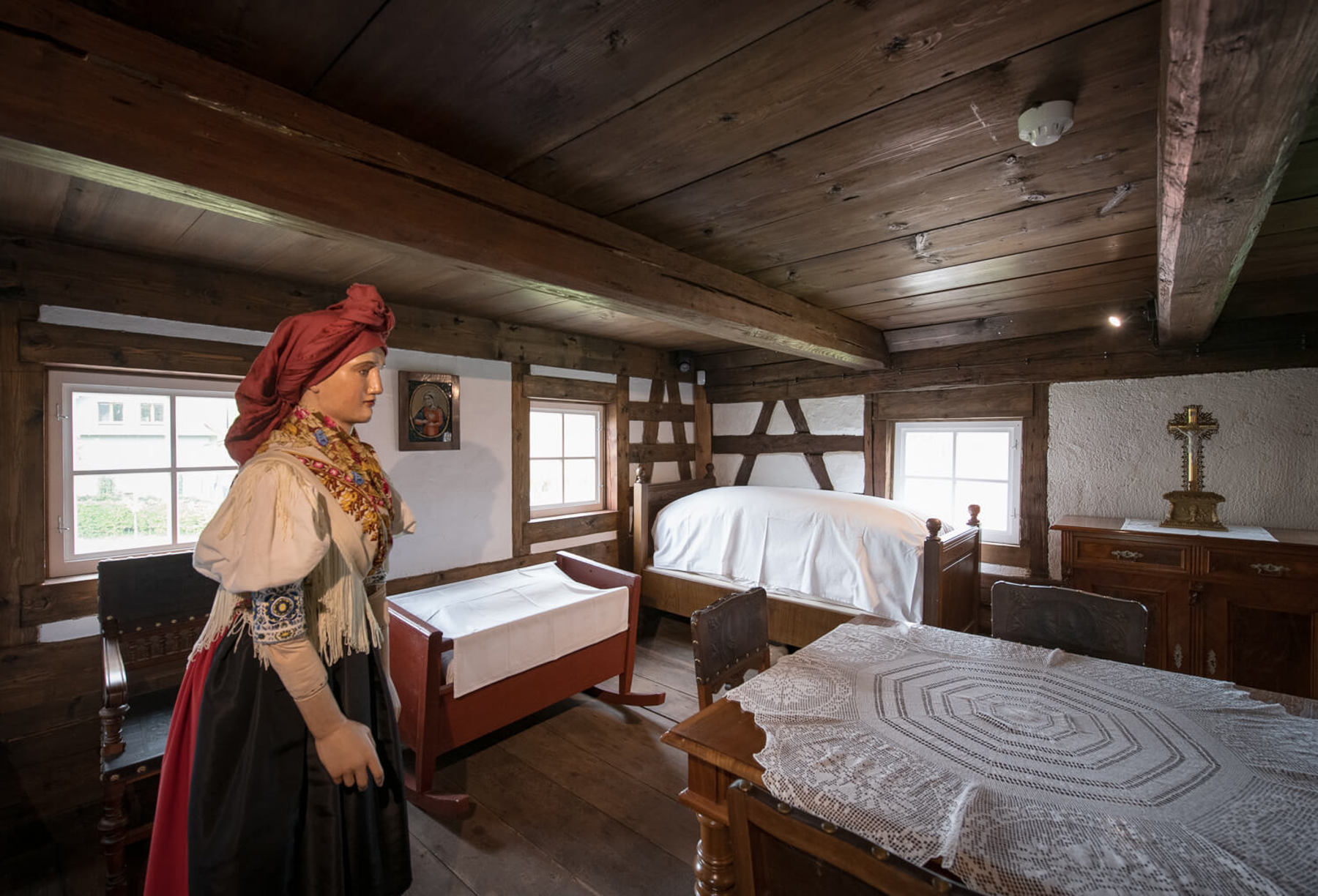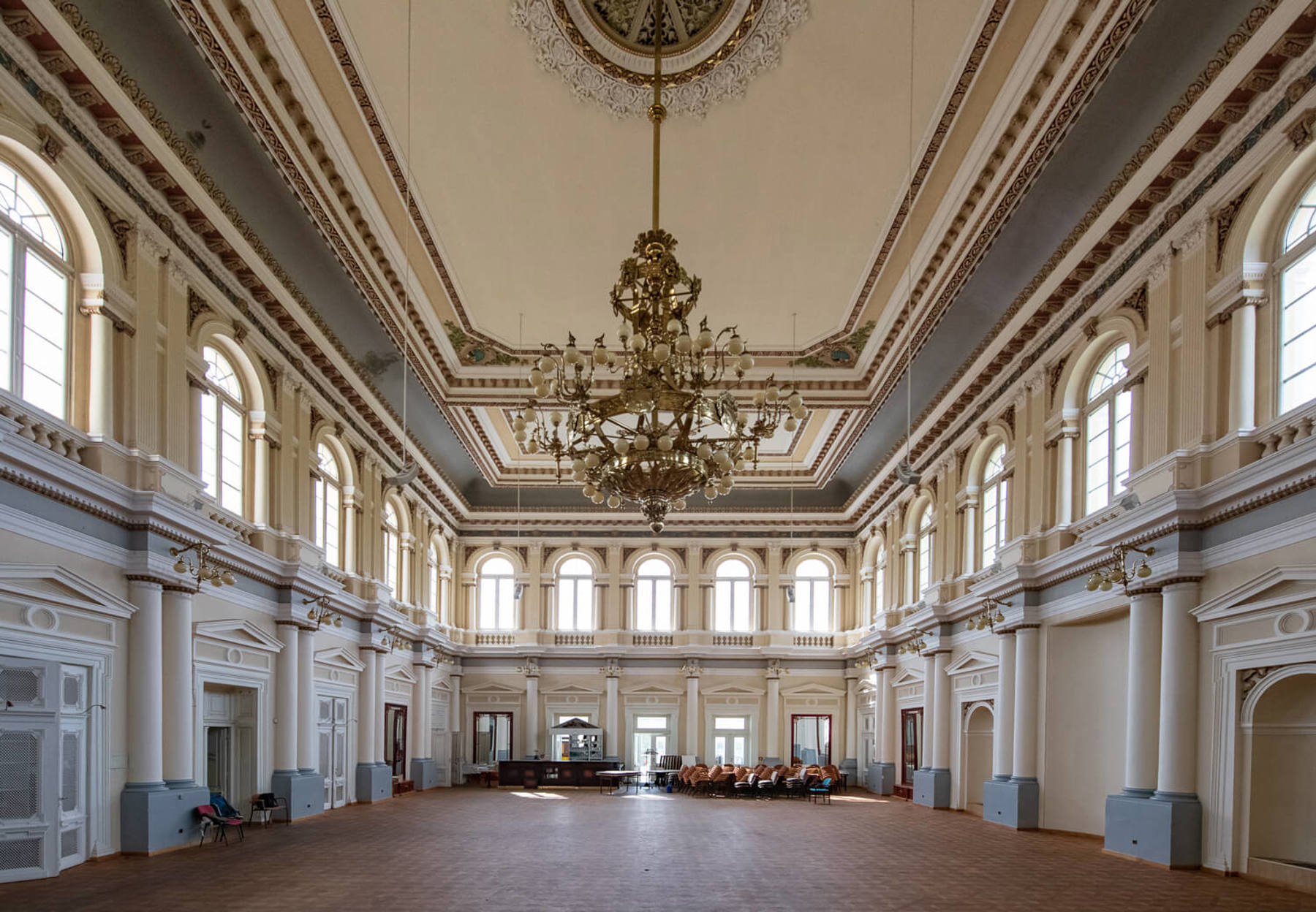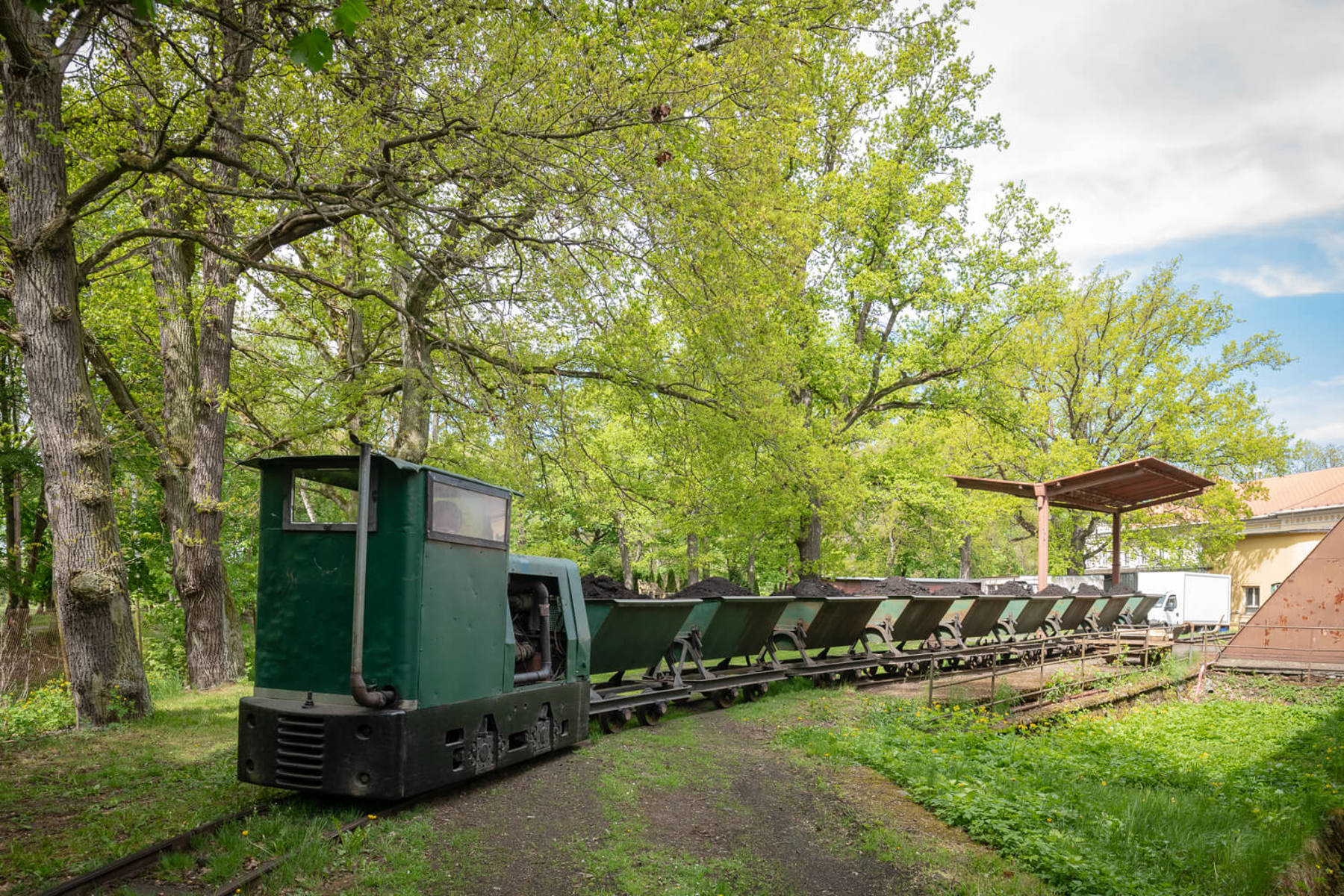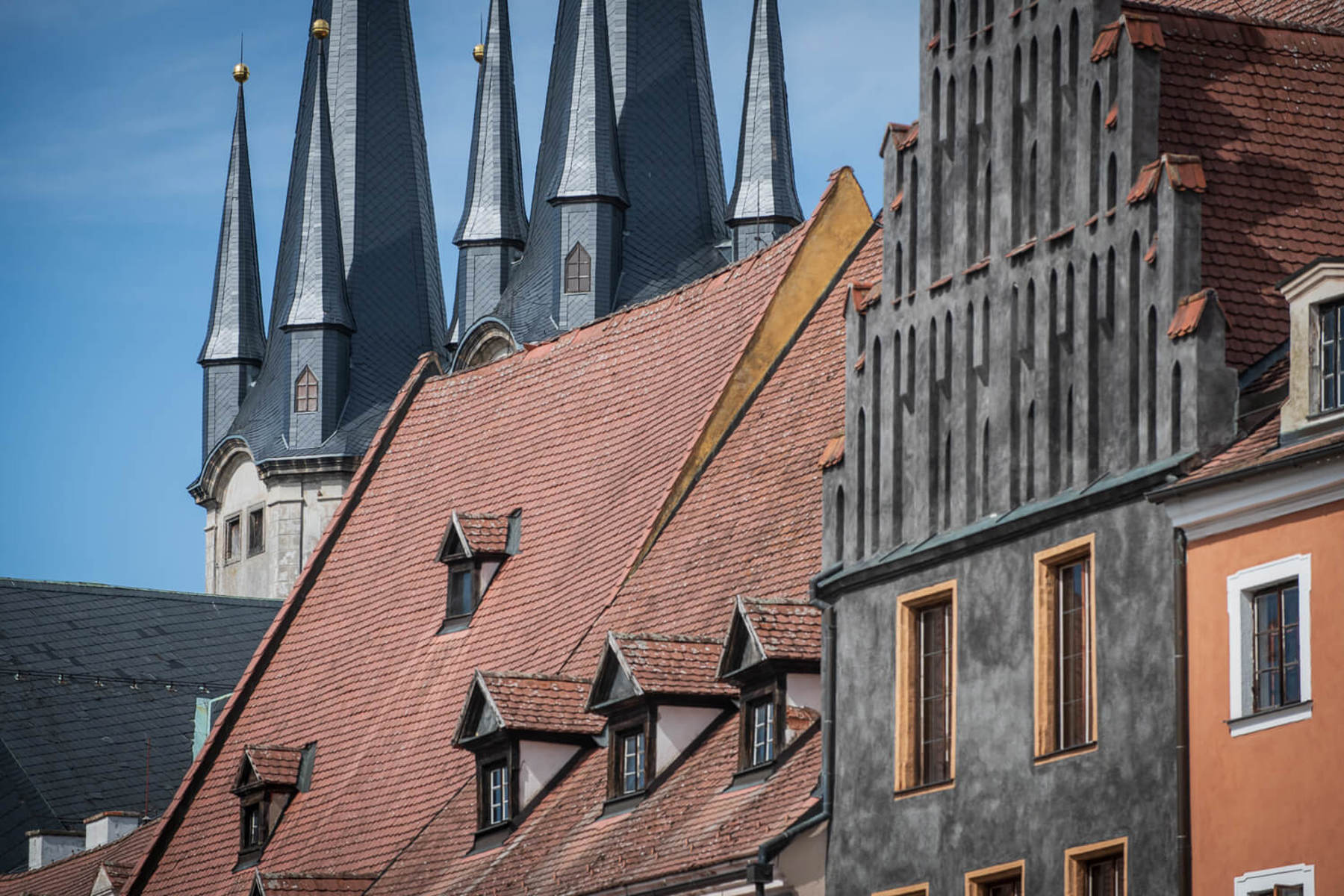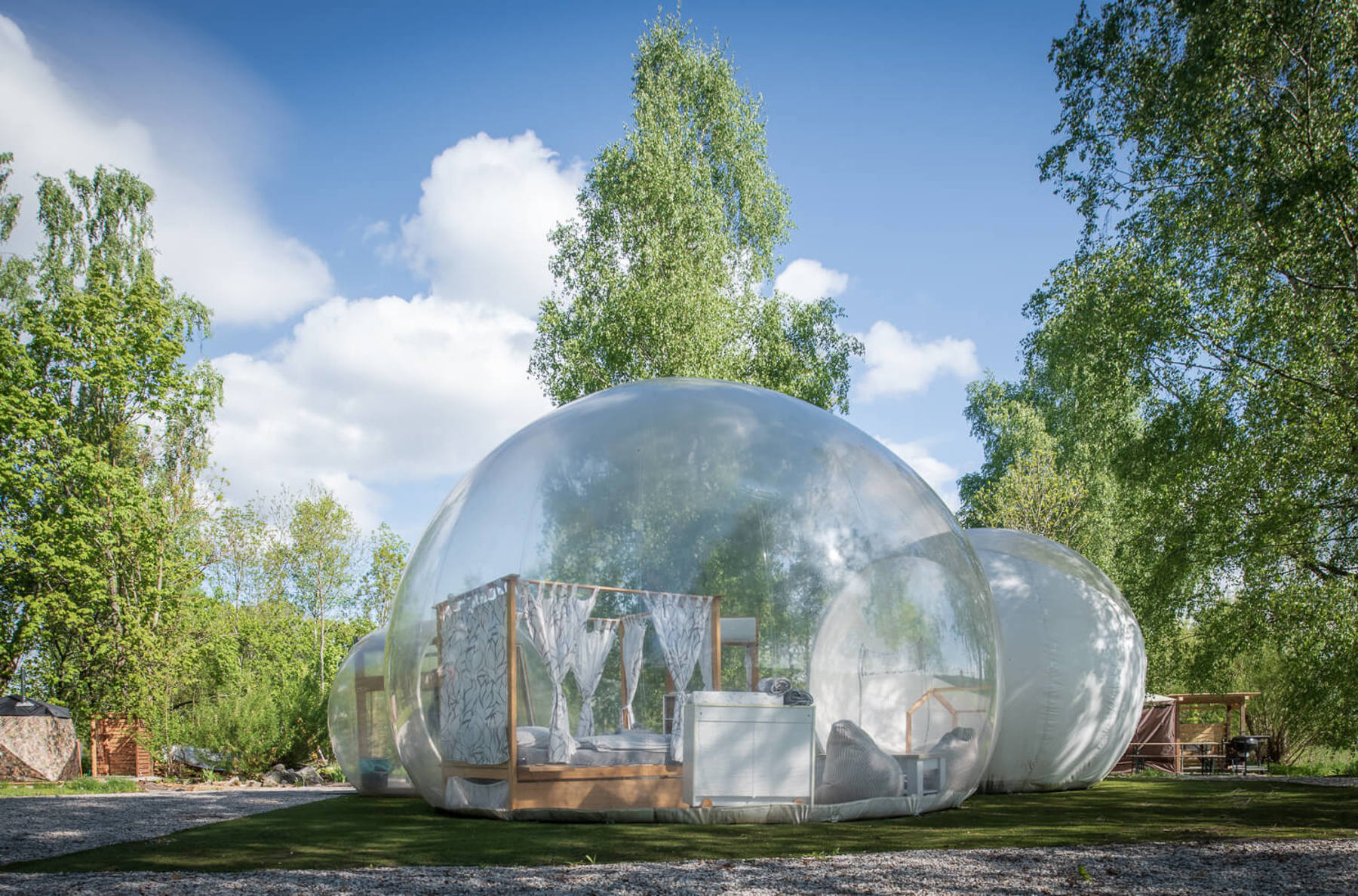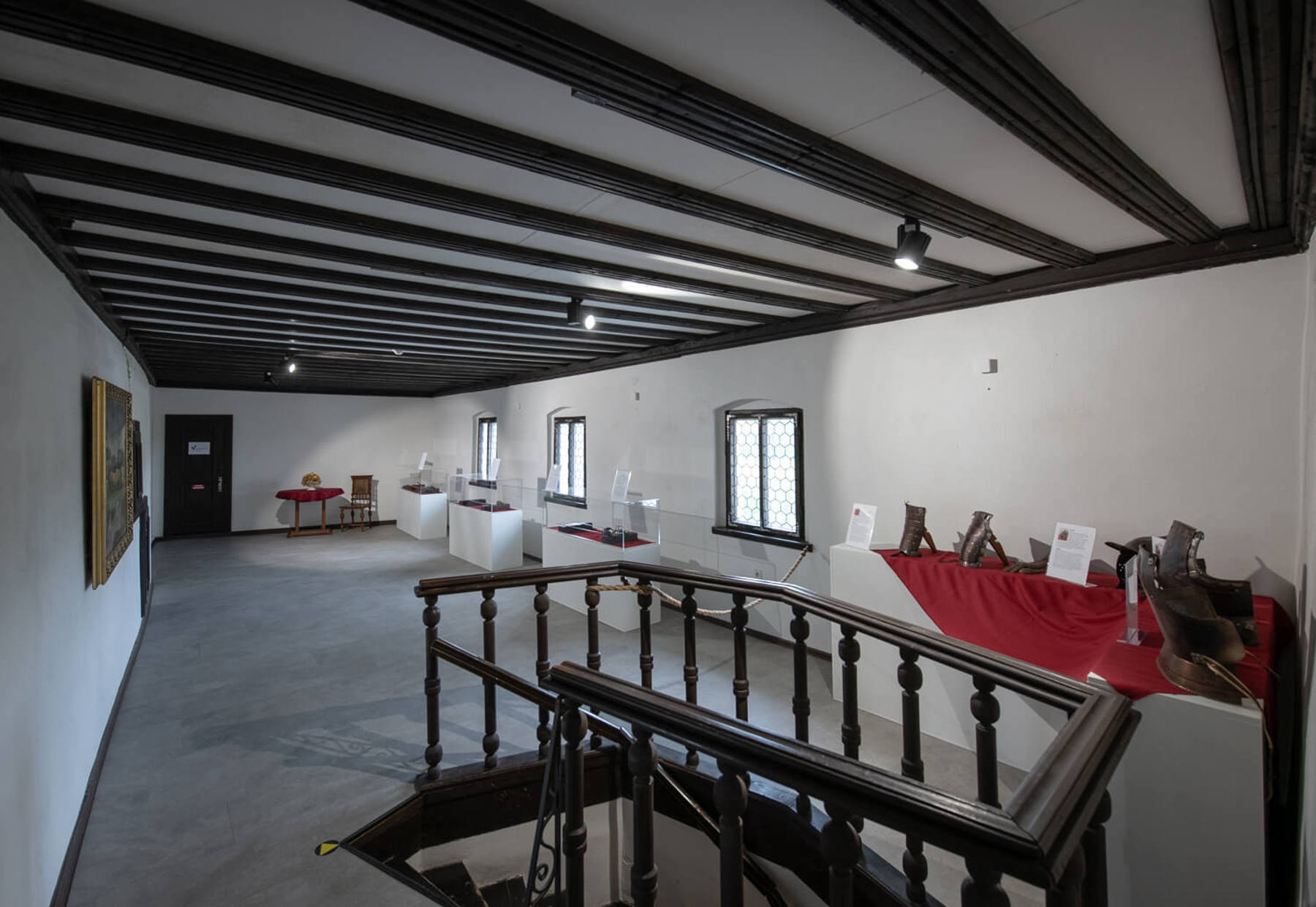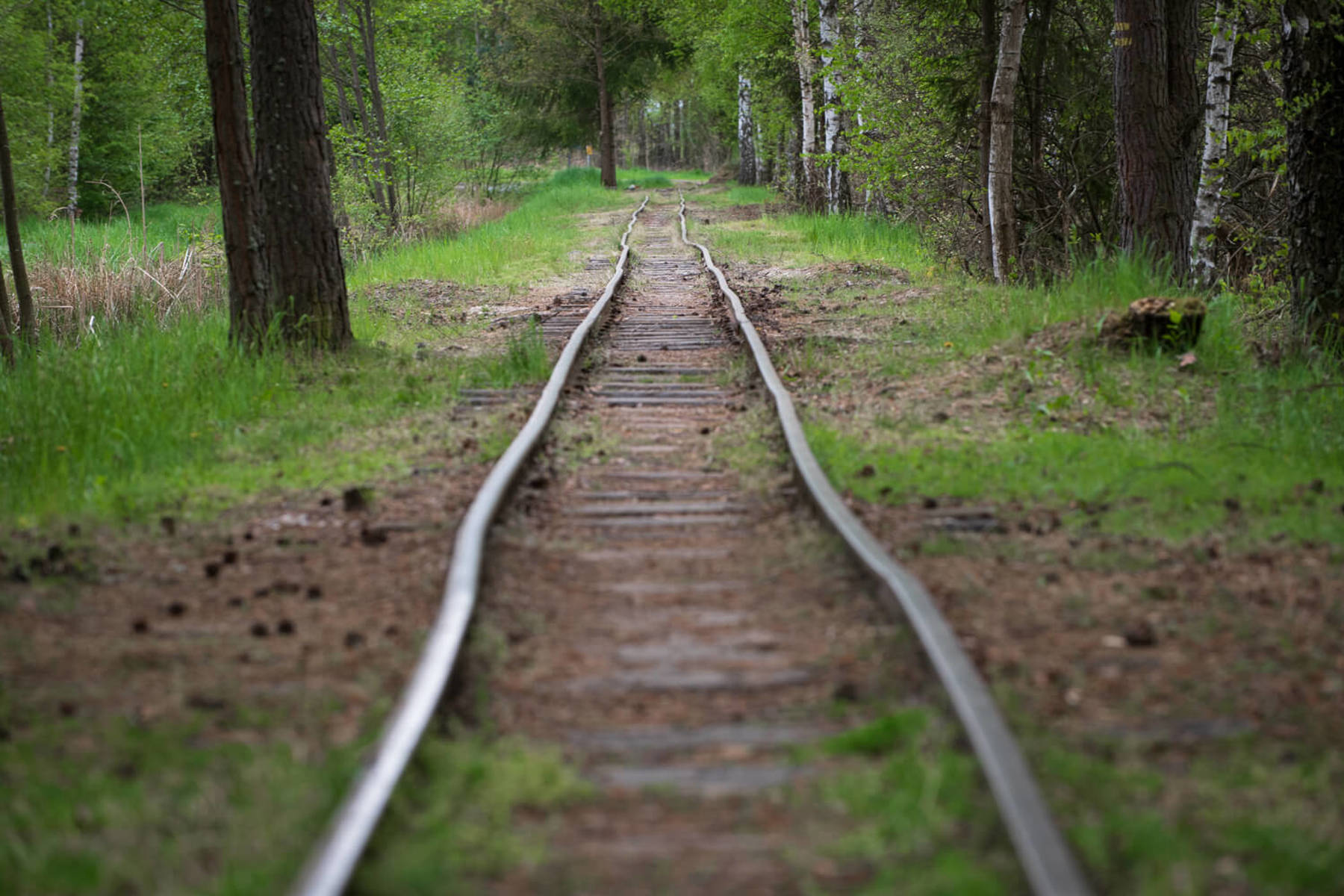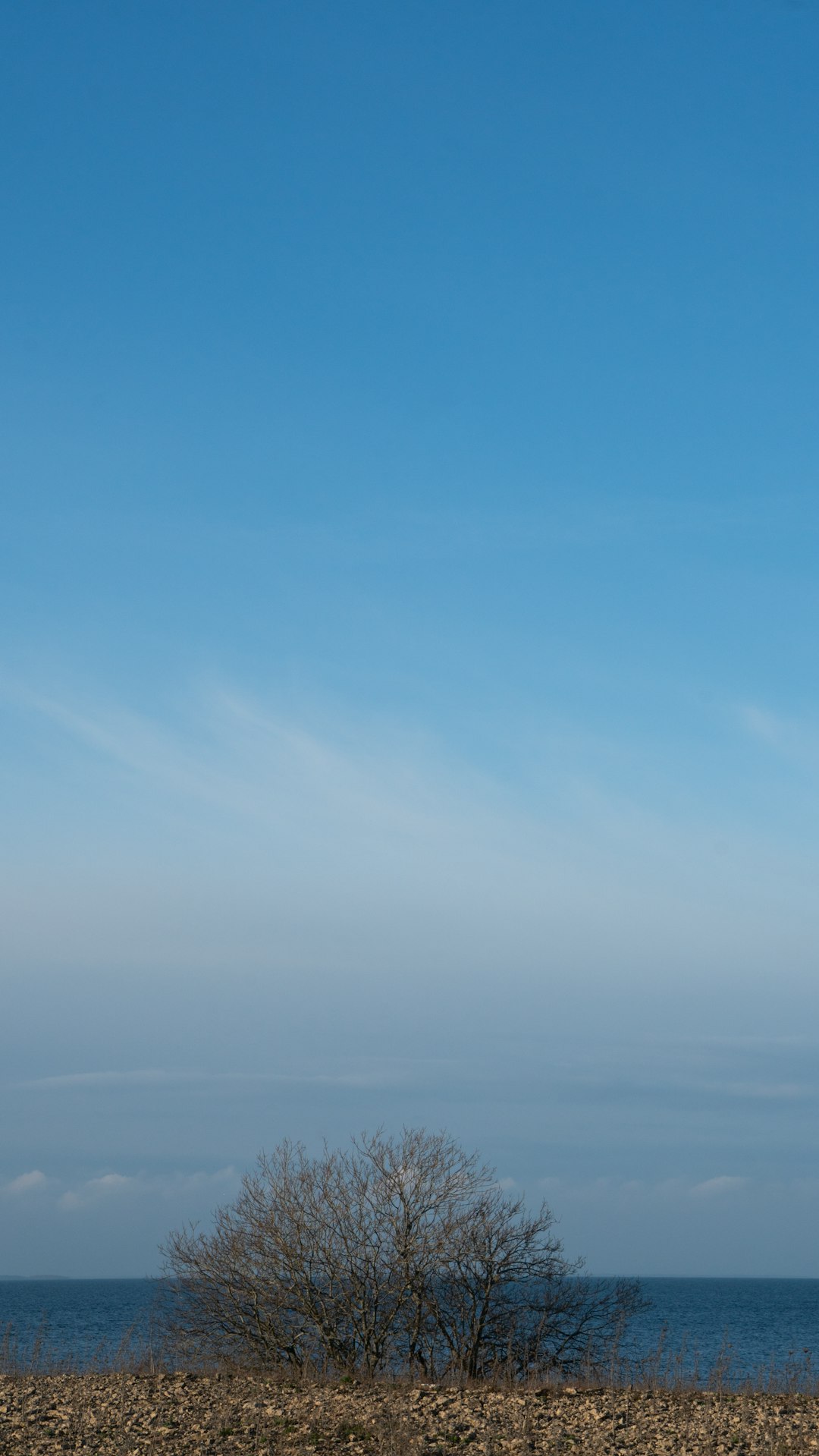6. June 2025

The first Location Tour of the year, a collaborative effort with the Karlovy Vary Region Film Office, took place on May 6th and 7th. Along with seasoned experts, we guided participants through both well-known landmarks and hidden gems of the region. Highlights included the picturesque streets and monastery in Cheb, the historic Windsor Spa House and Ingo Casino in Františkovy Lázně, the half-timbered Seeberg Castle, and much more. Beyond historical sites, we ventured into nature, observing peat extraction and exploring the serene Soos National Nature Reserve.
These Location Tours, organized by the Czech Film Commission in partnership with regional film offices, take place several times a year. Their primary goal is to introduce film professionals to exciting new filming locations across the Czech Republic. We carefully select these locations, ensuring they've yet to be captured on camera, and their operators are eager to host future productions.
During the May event, attendees particularly admired the well-preserved historical architecture. From the grand houses of Františkovy Lázně to the medieval alleys and castle chapel in Cheb, and even the Church of the Good Shepherd in Podhradí, these sites left a strong impression.
Aleš Hudský from Synergia Film shared his enthusiasm, stating, "I was most impressed by the beautiful colonnade, the spa park, and the interiors in Františkovy Lázně, as well as the chapel at Cheb Castle."
Director and lecturer Martin Vadas highlighted another captivating discovery: "I was very impressed by the well-preserved and reconstructed timber-framed farmhouses and houses, whether at the courtyard in Milíkov or the 19th-century Frankish farmhouses in the village of Nový Drahov – excellent backdrops with clear views for filming historical stories from the rural Sudetenland."
Even the tranquil Soos Nature Reserve, the final stop on our tour, charmed Yulia Maslova, a producer from Radio Free Europe (RFE). "I had no idea such a place even existed. It's a beautiful location for potential filming, for example, interviews," she remarked. Maslova also commended the overall value of the event, emphasizing its benefit "not only in terms of specific locations in the Karlovy Vary Region but also because I had the opportunity to get to know the Czech Film Commission itself better, which can also be useful for RFE's documentary department."
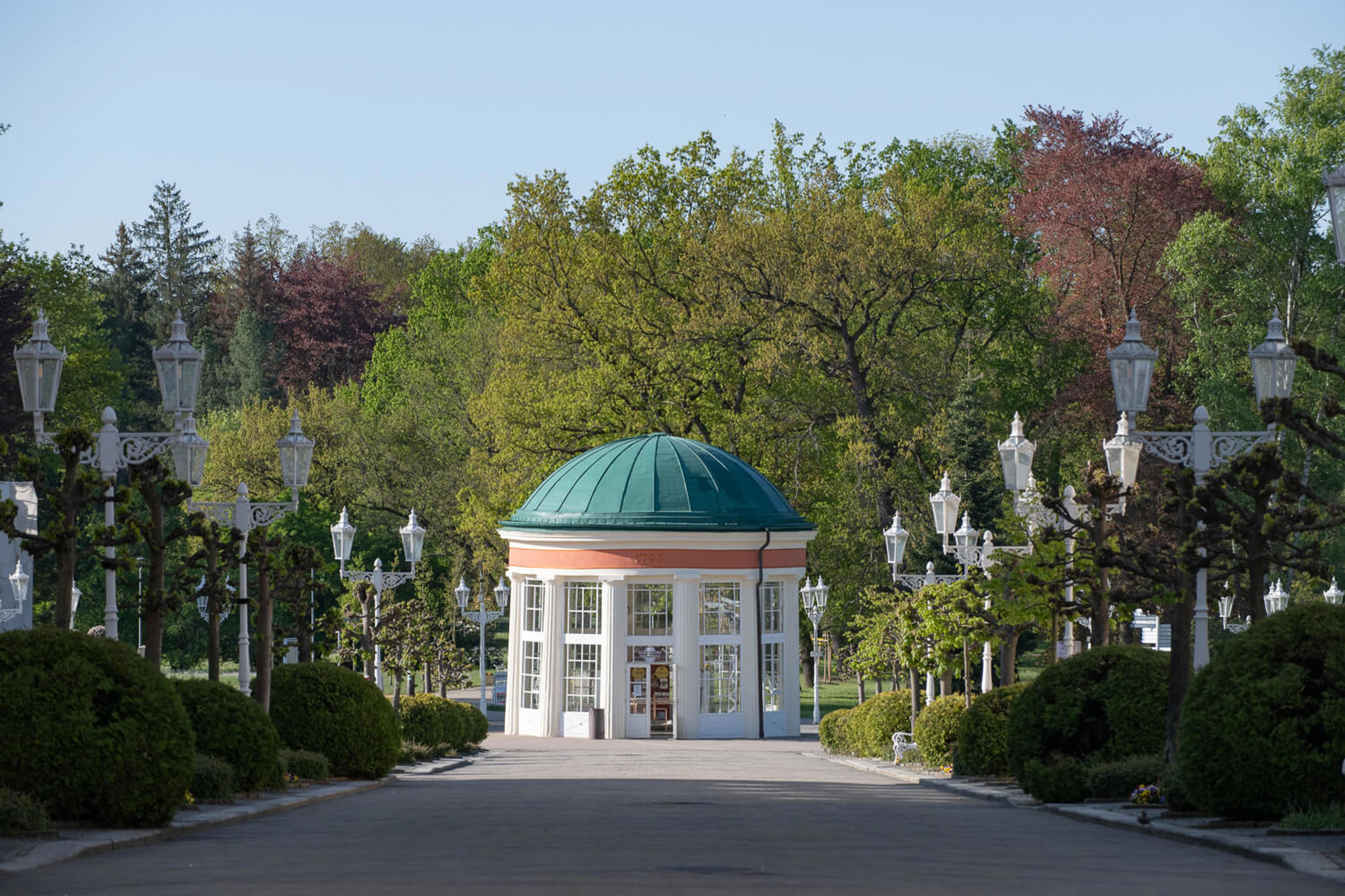
Czech Film Commission
Františkovy Lázně
Half-Timbered Farmstead in Milíkov
Our first stop was the charming farmstead in the village of Milíkov (formerly Miltigau), nestled at the foot of the Slavkov Forest near Cheb. This 18th-century farmstead features the typical four-sided layout characteristic of the Cheb region, with the courtyard enclosed on all four sides by a residential building, a cowshed, a barn, a shed, and a newer structure that replaced the original cowsheds. The oldest parts of the courtyard – the barn and shed – were built in 1781 and 1786. The Cheb Museum now manages the farmstead, and its interiors house exhibits that authentically portray life on a farm during that period. You can see decorations like painted chests, traditional costumes, and a "black kitchen."
Františkovy Lázně Offers Elegance...and Peat
Ingo Casino
The spa town of Františkovy Lázně boasts numerous elegant 19th-century buildings that still serve guests today, such as the Ingo Casino Community House. This building, with several grand halls, is used for balls and conferences and would be ideally suited for filming period scenes. The Classical design of the grand hall and main building was conceived by Ing. Rothhesel from Brandýs nad Labem, the builder of the then newly established spa. Later, another Františkovy Lázně builder, Gustav Wiedermann, designed the impressive Neo-Renaissance building with a spacious interior. Construction was completed in 1877.
Windsor Spa House
The listed Windsor Spa House has a somewhat eerie feel inside. While it served spa guests until just a few years ago, it is now closed to the general public. We were fortunate to have a guided tour of its interior, where the gracefully decaying hotel furnishings presented a distinctive setting perfect for a film production. From its exterior, the main building retains a stately presence, having been erected between 1862 and 1863 in the Romantic Historicism style, with its courtyard wings added later. This Neo-Gothic architectural gem is an integral part of the town's protected heritage zone.
Peat extraction
For enthusiasts of industrial heritage, a visit to the peat extraction site in Františkovy Lázně proved particularly fascinating. For over six decades, this site has processed peat for medicinal purposes. The extraction process utilizes a bucket excavator, after which narrow-gauge railway wagons efficiently transport the extracted moor mud to a mechanized depot situated nearby.
Cheb: Charming Medieval Lanes
The picturesque city center offers numerous possibilities for filmmakers seeking locations for historical projects set in the 13th and 14th centuries. The symbol of Cheb's main square is a group of houses called Špalíček, a complex of 11 buildings divided by the narrow Kramářská Alley. It was built from the 13th century on a site where merchant stalls and butcher shops once stood. Stone buildings gradually replaced the original wooden stalls with successive additions of upper floors featuring half-timbered construction.
Anyone seeking a place with an oppressive atmosphere can utilize the narrow "Murdered Alley" (Ulička Zavražděných). It was named after a tragic event on Good Friday in 1350, when most of the inhabitants of the Cheb Jewish ghetto were massacred on Židovska and Provaznicka Streets.
Cheb Roof Trusses
The houses in Cheb's main square conceal yet another treasure. The remarkably well-preserved wooden roof trusses, which breathe with the spirit of old times, drew great admiration from the tour participants. The Cheb roof trusses represent the most significant collection of these unique historical wooden structures, dating from the Middle Ages to the mid-20th century, across the entire Czech Republic.
Franciscan Monastery
The Franciscan monastery, with the Church of the Annunciation of the Virgin Mary, is one of the most important monuments in this medieval city. The monastery was built in the Gothic style in the mid-13th century and, in addition to the church, features a well-maintained monastery garden and a unique Gothic cloister with remnants of 15th-century wall paintings that include floral ornaments.
Castle
The imposing imperial palatinate-type castle rightfully dominates Cheb. It not only offers a magnificent view but is also one of the most significant Romanesque monuments in the Czech Republic. Among the best-preserved parts are the Black Tower, part of the Romanesque fortifications, and the breathtaking Chapel of St. Erhard and Ursula, which captivated all participants of our tour. This chapel, with its ancient frescoes, is considered one of the most remarkable early Gothic works in Central Europe.
Tips from the Modern Era
Střížov Paintball Arena
For depicting apocalyptic visions, dystopian environments, or science fiction, the extensive industrial complex of the Střížov paintball arena near Cheb could be a useful location. The complex consists of 10 smaller areas built in various styles. These include ship containers, a bus, a caravan, car wrecks, trenches, wooden obstacles, tunnels, natural obstacles, stairs, and more, which serve as backdrops here. Even those with a weaker disposition felt the apocalyptic vibe just from a brief tour of the complex, where it's very easy to get lost...
Glamping in Bublina
And now for something completely different - we paid a visit to a glamping accommodation. The glamping site Bublina (Bubble) is located in the village of Vlastislav u Aše and lives up to its name – it is a large bubble in which you can stay. This unconventional, large transparent plastic cell offers a feeling of immediate connection with nature and indeed an unusual experience when falling asleep, as if under the open sky, with views in all directions. Full amenities are available for visitors' comfort, including heating and air conditioning, as well as a kitchenette.
Aš – LaRitma
In the former Secondary Vocational School and computer manufacturing plant building, a new multifunctional facility was created for various cultural and educational purposes through the initiative of the town of Aš. The building serves as a cultural center, offering several halls equipped with stages, sound systems, and barrier-free access. A notable feature is the metal access staircase situated on the exterior of the building.
Back to History
Church of the Good Shepherd in Podhradí
Undoubtedly, one of the most admired locations during the May location tour was the Baroque Church of the Good Shepherd in the village of Podhradí. It is situated next to the ruins of Neuberg Castle and was originally a late Gothic church built between 1470 and 1490 by the Zedwitz family. This family later converted to the Protestant faith and rebuilt the church in the 16th century. The church is considered one of the oldest evangelical churches in the area, testifying to its close connection with Protestant Saxony. Visitors were particularly impressed by the magnificent frescoes on the ceiling and the overall interior decoration.
Seeberg Castle
The half-timbered Romanesque-Gothic Seeberg Palace, dating back to the 12th century, is ideally suited for filming fairy tales and much more. It boasts a Renaissance wing with an arcaded walkway. In addition to the chateau interiors, the adjacent Baroque barns, sheds, and granary in the forecourt are also remarkable, housing an exhibition dedicated to the folk culture, agriculture, and crafts of the Cheb countryside in the 19th century.
A Final Touch of Nature
The Soos National Nature Reserve
The last place we visited as part of the location tour was the Soos National Nature Reserve, nicknamed "Czech Yellowstone.” This extensive peat bog and moorland, featuring numerous mineral springs and rich in pure carbon dioxide, is unique for its appearance, reminiscent of a lunar landscape. The ground here is furrowed by erosion and covered with a layer of yellow and white mineral salts. A calming walk accompanied by birdsong was an ideal end to the expedition.
Contact for filming in the Karlovy Vary Region:
Karlovy Vary Regional Film Office
Petr Židlický
email: zidlicky@zivykraj.cz
tel. +420 736 650 129
The mission of regional film offices is to attract audiovisual projects to their regions and to be a reliable source of information for Czech producers.
One of the main tools to draw filmmakers’ attention to the region’s film-friendly locations is the location tour, which is organized for Czech film professionals, from producers and location managers to directors, writers, cinematographers, and film architects, by the regional film office in cooperation with the Czech Film Commission.
A representative of the regional film office connects filmmakers with property managers and owners. A location tour is often the first step towards further inspections for a specific audiovisual work in pre-production.
A photographer specializing in architecture, landscape, and location photography is present on the location tour. The resulting photographs are then used to promote the film-friendly locations by the regional film office and the Czech Film Commission for promotional activities aimed at foreign filmmakers and are actively offered when specific requests from abroad are received.





